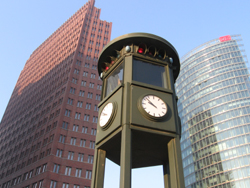Overview over all means of transport in Berlin
This tour will give an encompassing insight into the different types of transport in the city of Berlin. Experience interesting aspects of the different modes of travel in Berlin from the underground up to the airspace. The means of transport private car, heavy goods vehicles, buses, trams, underground, overground, long-distance and regional trains, and air traffic will be taken into account. The past and present of traffic in Berlin will be explored
Duration: approx. 2 to 3 hours

Railway City Berlin
Before the Second World War Berlin had the largest concentration of main railways at the heart of Europe and was situated half-way on the legendary Paris-Moscow line. The tour will tell you about the first Prussian railway, leads to the remnants of the Anhalt railway station, to the tunnel of the new north-south rail link with the new Central Station “Berlin-Hauptbahnhof/Lehrter Bahnhof , as well as other important sites
Duration: approx. 2 to 3 hours
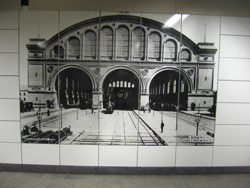
Public Transport in Berlin
Berlin has the largest public transport system in Germany, and the Berlin Public Transport Company (BVG) is the largest municipal transport organization in Europe. On this tour you can learn about the different modes of transport such as the underground, the overground “S-Bahn”, trams and the Berlin double-decker bus, the "Big Yellow"
Duration: approx. 2 to 3 hours
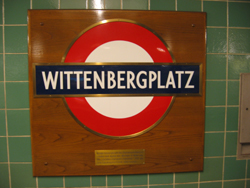
S-Bahn in Berlin
Since the 20s the Berlin S-Bahn network is electrified. It is the largest commuter railway net in Germany running on direct current. The network is made up of the east-west city railway, the north-south tunnel, and the ring railway and several radial feeder lines. Learn about the most interesting aspects of technology, construction, organization and operation of the S-Bahn

The Underground in Berlin
In 1902, the first underground in Germany started operating in Berlin, the German capital. Find out about the different stages of construction, the operation and the construction of the rolling stock. Trains with smaller and wider carriages, and construction for future projects all belong to the history of this transport system
Duration: approx. 2 to 3 hours
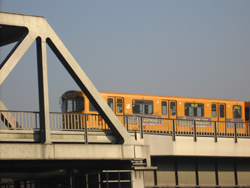
Waterways in the Berlin Glacial Valley
Once the melt waters of the great ice age glaciers ran through the region of Berlin. Now countless lakes, rivers and canals form the heart of the largest connected navigable waterway network in Europe. Many sluices, ports and other technical installations can be visited
Duration: approx. 2 to 3 hours
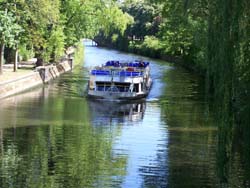
Air
Traffic and the Berlin Airlift – Coach Tour
Otto Lilienthal and the Wright brothers wrote aviation history in Berlin. During the Soviet blockade 1948-1949 Berlin was supplied entirely by air by the Allies. The U.S. pilot Gail Halvorsen became legend when he gave his candy rations to the children of Berlin, dropping them from his aircraft on little self-made parachutes. He was the first and original “candybomber”
Duration: approx. 2 to 3 hours

Around the new Berlin Central Station (Lehrte Station) – Walking tour
As early as 1910 there were plans to build a connecting tunnel between the old Lehrte Station and the Anhalt Station through the Tiergarten park. After the Wall came down in 1989 this old idea was brought back to life and modified. Since 1995, the new north-south rail link, with a new central station on several levels, has been under construction. Get an insight into planning and construction of this enormous project
Duration: approx. 2 to 3 hours

Transport
Projects in the “central area” between East and West – Walking Tour
The Potsdamer Platz was an attraction in the 20s, as it was considered to be the square with the heaviest traffic in Europe. In the Second World War, the buildings at Potsdamer Platz were badly damaged. Then, the Black Market flourished here. When the Wall had been built, the remaining buildings were torn down, and the square became derelict. This is where the city was divided. After the German reunification Potsdamer Platz has been redeveloped and has returned to being an important traffic junction in the city centre
Duration: approx. 2 to 3 hours
